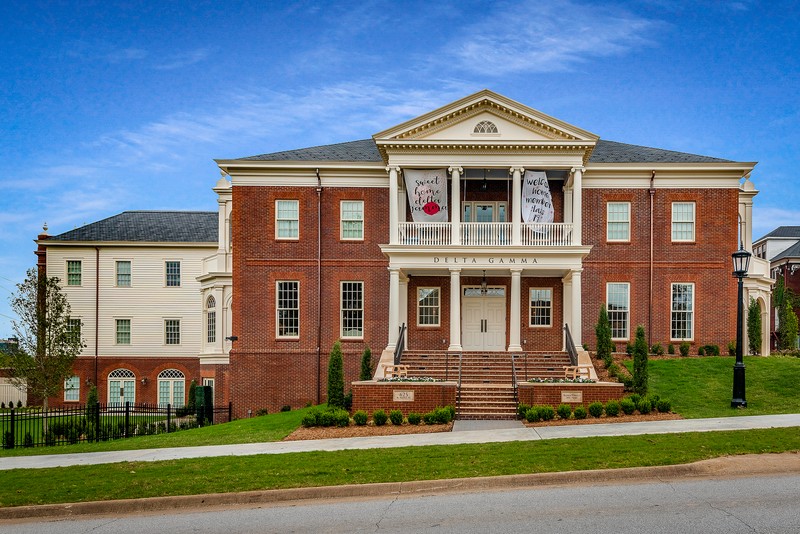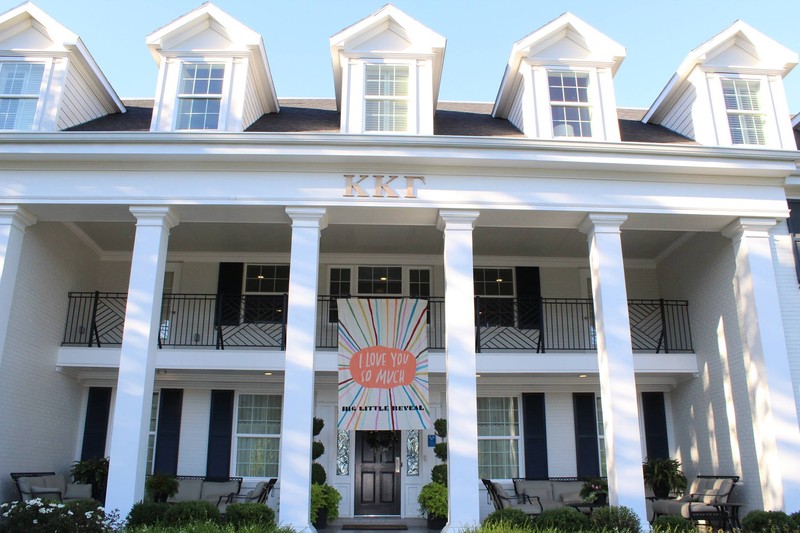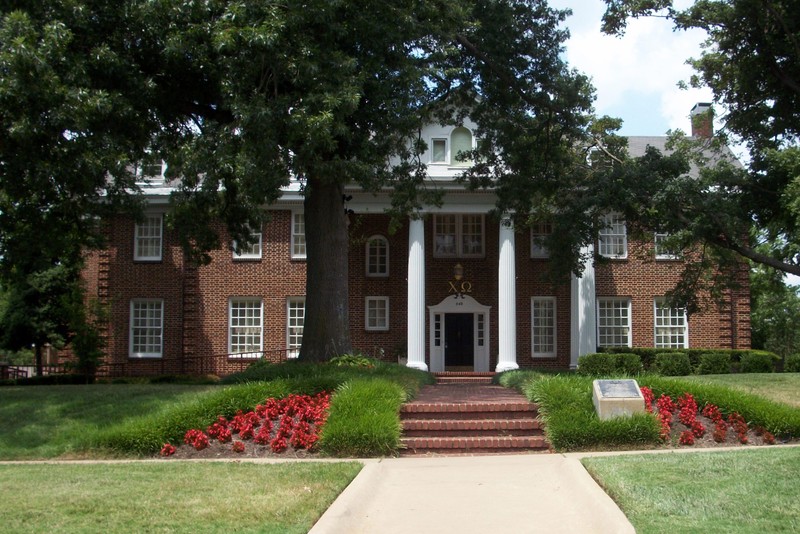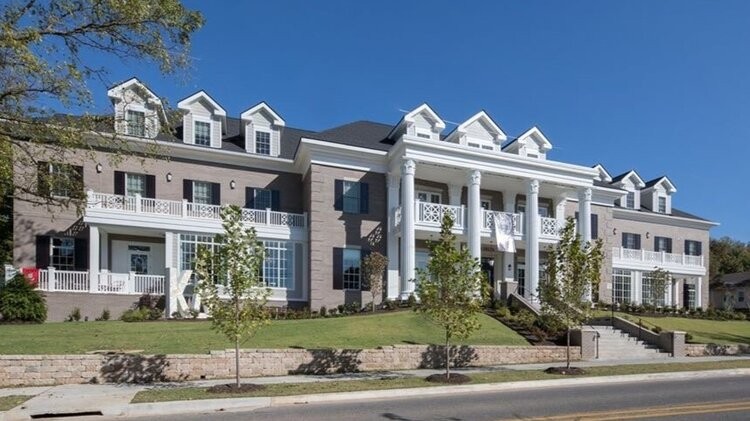Racist Symbolism in the Built Environment
Introduction
Text-to-speech Audio
Images
Delta Gamma house, completed in 2019

Kappa Kappa Gamma house

Chi Omega house

Kappa Delta house, completed in 2019

Backstory and Context
Text-to-speech Audio
The construction of sorority and fraternity houses is perpetual, with the University of Arkansas Kappa Delta and Delta Gamma houses being the most recent. These houses have served as a public face for the university and they will continue to do so. With hundreds of new members each year, construction is not going to slow down. However, there is something disheartening about this growth, referenced in a tweet: “BlackatUARK is having slave owner mansions get built in a year time but my fraternity having to wait years for new furniture.” The #BlackatUARK twitter movement started in the summer of 2020, following worldwide Black Lives Matter protests. African American students began to speak out against many things on campus, with many of them revolving around Greek life. This tweet was the only one about the houses themselves, and the most intriguing. This disparity fits into my argument, and the argument of others, that the racism embedded in sorority houses is reflected by their physical appearance.
Revival, or historicist, architecture comes from a place of tradition. My discussion with Professor Jeff Shannon from the Fay Jones School of Architecture revolved around this idea: architects often have to appeal to the client's wishes. To appeal to a broader range, contemporary styles can be risky. One can see how this does not help with the issue of plantation revival on the University of Arkansas campus. The Chi Omega, Kappa Delta, Phi Mu and Delta Gamma sorority houses are four of the many that bear revival aesthetics.
Greek life houses bear distinct antebellum aesthetics. The white columns, two story temple front façade and wide porches are a few examples. At a glance these houses are seemingly innocent. Revival styles have been around for centuries, and colonial America went to great lengths to revive Greek and Roman forms in significant urban locations. Unfortunately, this also includes plantation style homes, stemming from the romanticism of the antebellum South in the late 1800’s. Greek life houses are not innocent, or subtle, in their replication of these forms. In the Kentucky Law Journal, Professor Stephen Clowney states, “At the University of Arkansas, architects for the Phi Mu sorority showed slides of the Southern plantations that influenced their blueprints." This, according to Clowney, is not the only instance of this. Even in 2019, two new sorority houses were built that bear the same mark of the Confederacy and prompted that tweet with the adjective: “Slave owner mansion.” The forms are also symbolic of Greek life’s resistance to integration, perpetuating de facto segregation that is still reminiscent today.
The #BlackatUARK movement brought to light atrocities committed by Greek life members. However, their racist acts are prophesied by the places where they live. The architecture and the actions of the members are in parallel, reinforcing Clowney’s belief that these houses are “Structures of meaning.” There is also the explicit side. Like the tweet in the beginning, there is a clear disparity in the treatment of the predominantly white sorority houses and Black sorority houses. If the University wants to make these sorority houses as visible as they are, they cannot take the built form lightly. When Black Americans for Democracy was started at the University of Arkansas in the late 60's, their ideals revolved around self advocacy and sought to call out many things wrong with the campus, ringing true with the #BlackatUARK movement. The newspaper covered many topics cited throughout the other Clio entries, ranging from protests to a yearly pageant. B.A.D made it a point to see the positive side of Greek life segregation, forming Black Greek organizations to strengthen the brother and sisterhood. Lynn Harris wrote, in 1974, “[Black Greeks] must rally together not as Omega’s, Delta’s or Alpha’s but as Black Greeks working together for a common cause.” Another quote by Gordon Morgan embodies the attitude that Black fraternities were founded on, when discussing the lack of Black Fraternity houses, “It is not the house that makes the fraternity, but the brotherhood of its members.”
These comments made in the '70s are in parallel with the calls for change brought to light by the #BlackatUARK tweets. It is another small piece in the big picture of racism on our college campus, and, while it is first and foremost a theoretical position, there is tangible evidence of this direct relationship between racist architecture and racist actions.
Nate Cole is a current honors junior, on track to complete his B.A. in May of 2023 with a major in Architecture and a minor in History of Architecture and Design, and Urban Planning. Currently, he is working as a Resident Assistant in Hotz Hall and as the RIC dir. of Sustainability to advocate for campus sustainability goals and improvements, and hopes to work with preservation or urban planning in the future.
Sources
Clowney, Stephen, Sororities as Confederate Monuments (January 1, 2020). Kentucky Law Journal, Vol. 105, 2020, Available at SSRN: https://ssrn.com/abstract=3556170
“Sound Off! Black Greeks.” Black Americans for Democracy Newspaper (Fayetteville) October 15th 1974. Page 4.
“UA to Get a Black Frat.” Black Americans for Democracy Newspaper (Fayetteville) February 22nd 1974. Page 2.
@Zaddy_501. “BlackatUARK is having slave owner mansions get built in a year time but my fraternity having to wait years for new furniture.” June 15.
